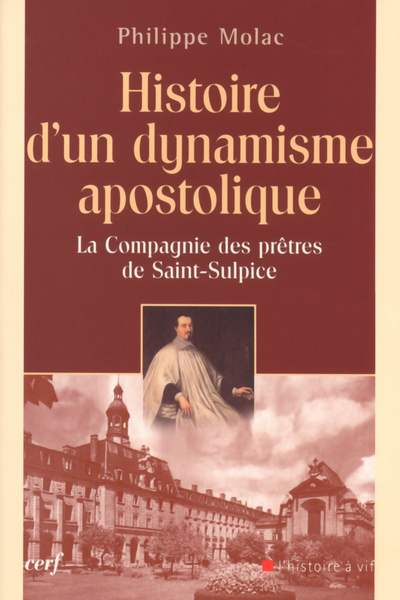- EAN13
- 9782204087131
- Éditeur
- Cerf
- Date de publication
- 30 octobre 2008
- Collection
- L'histoire à vif
- Nombre de pages
- 337
- Dimensions
- 21,5 x 14,5 x 2,6 cm
- Poids
- 510 g
- Langue
- fre
Histoire D'Un Dynamisme Apostolique, La Compagnie Des Prêtres De Saint-Sulpice
Père Philippe Molac
Cerf
Prix public : 29,70 €
" Chacun doit être seulement ce que Dieu veut, et non autre chose. Nous, prêtres de Saint-Sulpice, nous sommes la racine de l'arbre sacerdotal. Il faut laisser la racine en terre ; sortez-la, elle se dessèche, et n'est plus bonne qu'à mettre au feu. " Ces paroles de M. Lebas – supérieur général de 1901 à 1904 – rappellent d'emblée la vocation de formation des prêtres diocésains de la Compagnie de Saint-Sulpice. Depuis sa fondation, le 31 décembre 1641, par Jean-Jacques Olier, jusqu'à nos jours, une tradition de 350 années s'est développée, au milieu de bien des changements et vicissitudes. Cette racine sacerdotale, le fondateur l'avait mûrie et réfléchie au cœur d'une expérience mystique dans ce renouveau spirituel de la France du début du XVIIe siècle. Il fallait, selon lui, retrouver le souffle de l'esprit apostolique qui avait encouragé les premiers disciples du Christ à annoncer l'Évangile aux nations. C'était la condition nécessaire pour redonner aux Français la vertu de religion. Et pour cela, une " élite " sacerdotale était l'un des moyens de reconstruction de la foi diluée. Une élite puisant sa force dans la contemplation et la méditation du mystère du Verbe incarné : le prêtre doit être proche du cœur du Christ, Lui, le seul vrai adorateur du Père. Cette intuition profondément missionnaire, Olier et ses successeurs la portent, au cours des siècles, en plusieurs points du globe : au Canada dès 1657, puis aux États-Unis en 1791. Plus récemment, au XXe siècle, beaucoup d'autres pays et cultures découvrent l'expérience pédagogique de Saint-Sulpice et font appel à elle. L'objectif de cet ouvrage n'est pas d'abord de dresser une histoire de type scientifique. Peut-être celle-ci viendra en un temps ultérieur. Il paraissait utile, à une heure où bien des interrogations se lèvent quant à la formation des prêtres, dans le monde occidental et particulièrement en France, de retracer de manière succincte l'histoire de la Compagnie. -- 'Each one of us must be what God wants us to be, and nothing else. We, the priests of Saint-Sulpice, are the root of the sacerdotal tree. The root must remain in the soil; if it is removed, it dries up and is fit for nothing but building a fire.' So speaks M. Lebas, superior general from 1901-1904, reminding us of the Compagnie de Saint-Sulpice's vocation: the training diocesan priests. From its foundation in 1641 by Jean-Jacques Olier to our times, a three-hundred and fifty-year-old tradition has been constructed amid change, trials and tribulation. That sacerdotal root was conceived and nourished by the founder, at the heart of a mystic experience set in the spiritual renewal in France at the beginning of the 17th century. He believed it was necessary to rediscover the force of the apostolic spirit that had encouraged the first disciples of Christ to announce the Gospel to the nations. This was the price of giving the French people the virtue of religion. A sacerdotal 'elite' was one way of reconstructing their weakened faith, an elite drawing its force from the contemplation and the meditation of the mystery of the Word made flesh. The priest must be close to the heart of Christ; He who is the only true worshipper of the Father. Olier and his successors carried this deeply evangelical intuition throughout the centuries, all over the world: to Canada in 1657, then to the United States in 1791. More recently, in the 20th century, many other countries and cultures have discovered and called upon the pedagogical experience of the Compagnie de Saint-Sulpice. The aim of this book is not to provide a scientific history. Perhaps this will come later; for now, at a time when many questions are being asked about the training of priests in the Western world and in France in particular, it seemed useful to publish a succinct history of the Compagnie de Saint Sulpice.


















